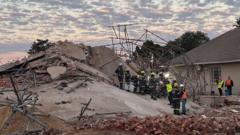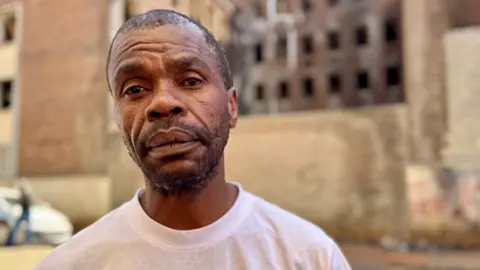A devastating building collapse in George, South Africa, which led to the tragic deaths of 34 construction workers last May, has been deemed "entirely preventable" by the government. A thorough investigation has found that numerous serious safety concerns were raised long before the five-story apartment block fell, resulting in a tragic failure to act on observable issues.
Public Works Minister Dean Macpherson expressed his anger over the incident, citing multiple factors that contributed to the disaster, including the use of substandard materials, visible structural cracks, and large gaps in the building's integrity. "There were a number of red flags that were continually raised about this project," Macpherson stated, emphasizing that some of the defects had been identified as early as a year before the fatal incident.
The health and safety officer responsible for the site had even resigned in protest over the unsafe conditions, yet construction work continued against all warnings. The report revealed alarming practices, such as workers being told to cover holes with sand and using inadequate concrete. Macpherson stated, “The work should have stopped,” highlighting the missed opportunities for intervention.
In a deeply emotional meeting with survivors and relatives of victims, Macpherson pushed for criminal accountability for those who neglected safety protocols. Although a police investigation is currently underway, no arrests have been made so far. The aftermath of the tragedy has left many survivors grappling with lasting trauma, medical expenses, and financial distress. Affected individuals like Elelwani have shared their stories of loss and struggle, including physical injuries and social challenges.
In response to the disaster, Macpherson has committed to introducing new regulations aimed at improving oversight in construction and reforming outdated legislation. This tragic event has triggered a call for significant changes in practices to prevent similar catastrophes in the future. The investigation was led by the Council for the Built Environment, alongside a parallel examination by the Engineering Council of South Africa.




















